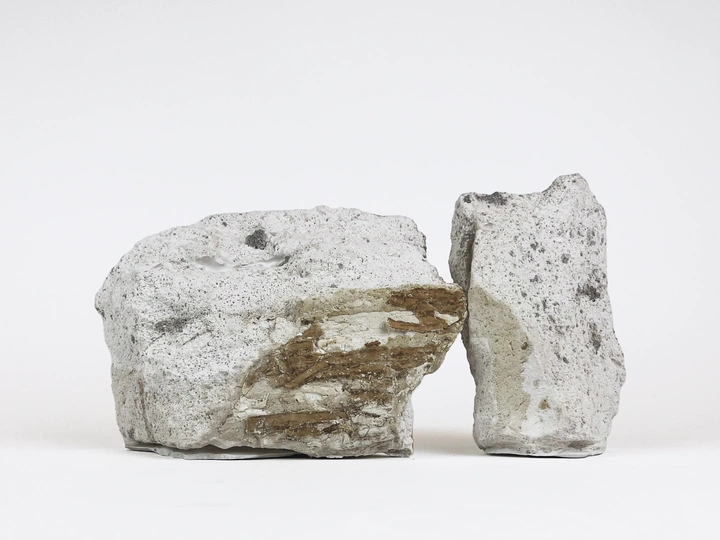Between Resource and Waste

Ellen Hällebrand is an architect based in Malmö, Sweden. Driven by an interest in the growing discourse about post-sustainable understandings of architecture her work surrounds the topics of unbuilding and extraction. By working with writing, drawing, and making simultaneously, she aims to explore the designerly consequences of developed concepts. She holds a MSc in Architecture from Chalmers University of Technology, Gothenburg.
Waste has been defined as that which is irrelevant, obsolete, or that which has no value. As a category of materials, it is interesting because it reveals the normative order of the world, but also because its ambiguous nature allows for reinterpretation and repurposing.
”Closing the loop” implies that material flows can be made fully circular by regarding used materials and commodities as resources for new production. In such an ideal system the category of waste disappears. This thesis argues that besides looking into how the loop can be closed, architecture should explore the properties of the category of waste in order to investigate the loop itself. Wasted matter is proof of something being wasted – time, labour and resources – and should not be framed as solely a sustainability issue. Rather than attempting to eliminate waste this thesis examines the potential of waste, asking the question: How can that which lacks value and purpose be designed or be designed with, while still critically engaging with its wasted state?
Taking cues from research within the social sciences and humanities, as well as from contemporary practices in art and architecture, varying scales of waste concepts are addressed. The outcome of the thesis is a speculation in how the accidental and non-standard properties of materials marked by a demolition process can be considered and included in design. The qualities that such materials possess become operational by abstracting them through rep- resentation. Manifested in the drawings of a building in a borderland between model and reality, the design speculation is contextualized by its discourse rather than a site. By turning to waste, the thesis examines moments where the loop from wasting to extraction is starts over. It speculates on what place there is for waste when linearity is tied together to circularity.